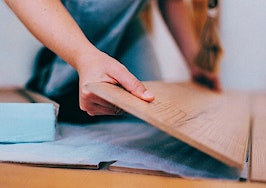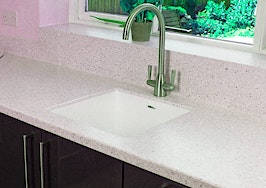 New to the industry? Get started with everything you need to know about the early decisions that’ll shape your career, including choosing a brokerage, learning your market, creating an online presence, budgeting, getting leads, marketing listings and so much more. If you’re a team leader or broker-owner, New Agent Month will be jam-packed with resources to help your new hires navigate.
New to the industry? Get started with everything you need to know about the early decisions that’ll shape your career, including choosing a brokerage, learning your market, creating an online presence, budgeting, getting leads, marketing listings and so much more. If you’re a team leader or broker-owner, New Agent Month will be jam-packed with resources to help your new hires navigate.
Solid hardwood floors are the gold standard for the residential market — not only for their warmth and rich appearance, but also for their durability.
Pre-war housing, constructed before 1940, always features solid hardwood flooring, usually oak, maple, fir and yellow pine, sometimes with borders or patterns such as herringbones and special, customized installations. Often, different types of woods were combined to create singularly beautiful floors.
Craftsmanship and raw materials were the two essential elements required to support this type of flooring and customization. Another factor involved with hardwood flooring is the maintenance to repair and service wood floors, as well as the housekeeping required to keep them clean and in good condition.
Tradesmen who are skilled in fine hardwood flooring are no longer readily available. When pre-war houses were built, fine craftsmanship was a point of pride in trades, and apprenticeship programs were still being utilized.
Labor was reasonable, and the products of the skilled hand of carpenters and installers is still evident in older homes. Hand-carved wood mantles, banisters, moldings, doors, windows and frames for both are prized and heavily valued.
Banisters and balustrades for stairs were a point of pride and featured in entryways along with stained-glass windows, transoms and room dividers, plaster ceiling medallions and ceiling designs. Craftsmen were willing to train and invest time in their craft, and architects, builders and homeowners had the patience to wait while production took place.
Raw materials like lumber and exotic hardwoods were readily available for pre-war construction, particularly flooring. Housekeepers, maids or stay-at-home mothers had time to polish and wax floors to maintain their pristine, glowing appearance, and more time was spent in the home to appreciate and enjoy their efforts.
After 1940, as life sped up, jobs outside the home became important to women, and streamlined and futuristic designs and styles became popular, craftsmanship was no longer valued. Conservation of trees and natural resources was emphasized, and easy care for the home and housekeeping became more and more commonplace.
Engineered wood floors — a new type of flooring — dominated the market in the 1960s. A sandwich of layers, called “plies,” this type of flooring is comprised of hardwood and plywood bonded together with a heating and pressing process.
A veneer of hardwood is the top layer, which is the most important because it is visible. This veneer is 1/16 to 1/8 of an inch thick, underneath which is a core of plywood, each layer perpendicular to the one above it to add strength.
The layering adds to the tensile strength and stability. It also makes it less susceptible to expansion and contraction. The number of layers or plies indicates the strength and quality of the engineered wood floor. Engineered wood floors can have as few as three layers and as many as 12, though the average is five.
The wood flooring industry considers solid wood floors and engineered wood floors to be interchangeable, and there is very little difference once they are installed. Before installation, the plies (or layers) are evident from the side of each plank of engineered wood flooring.
Solid wood floors are cut from trees and may be plain sawn, quarter sawn or rift sawn, all of which provide different effects. The different methods can be combined to provide a variety of effects on the floor. As each tree is different, and the method used to cut the plank from the tree can be different, the effect of a solid hardwood floor is the most natural and the most desirable — hard to reproduce in any manufactured floor.
The appeal of engineered wood flooring is not the price, as it can be as expensive as hardwood, but its ease of installation and its ability to withstand moisture. Similar to laminate floors, engineered floors install the “Click Lock” system, with tongue-and-groove planks that connect together without glue.
Areas with light moisture — like bathrooms or kitchens — are good areas to use engineered floors. On the other hand, basements that are prone to flooding are not appropriate for this type of floor.
Engineered wood floors can be installed over concrete slabs, but the moisture content cannot exceed 4 percent. Tests can be performed on concrete slabs to determine moisture content prior to installation.
As engineered flooring uses no glue or adhesive, a sublayer of foam or cork allows the floor to float. Another reason that engineered wood floors are preferred is that they can quickly be installed over any secured subfloor, such as plywood, ceramic tile, old hardwood or dry concrete.
Engineered wood floors are very durable, and their number of layers is the best indicator of their length of life. Thinner floors last 20 to 30 years, and thicker floors have a lifetime of 40 to 80 years.
Engineered wood floors can be scratched or dinged like solid wood floors. However, unlike hardwood, not all engineered floors can be sanded and refinished. Damaged areas of the floor can be replaced but may appear newer than the original surrounding floor, as engineered floors will fade in sunlight. Thicker engineered floors can be sanded up to five times, but it is wise to exercise caution and anticipate sanding only one or two times.
While the price of engineered wood floors is comparable to hardwood, the ease of installation and easy availability make this type of flooring an excellent option for upgrading tired, worn or damaged floors in houses.
Beautiful hardwood floors will never go out of style, and the expense and upkeep are worth the investment to some homebuyers. Real estate agents who can discuss various options and installation methods for older homes and fixer-uppers will clearly have an advantage when working with buyers.
Gerard Splendore is a licensed associate real estate broker with Warburg Realty in New York. Connect with him on LinkedIn.













